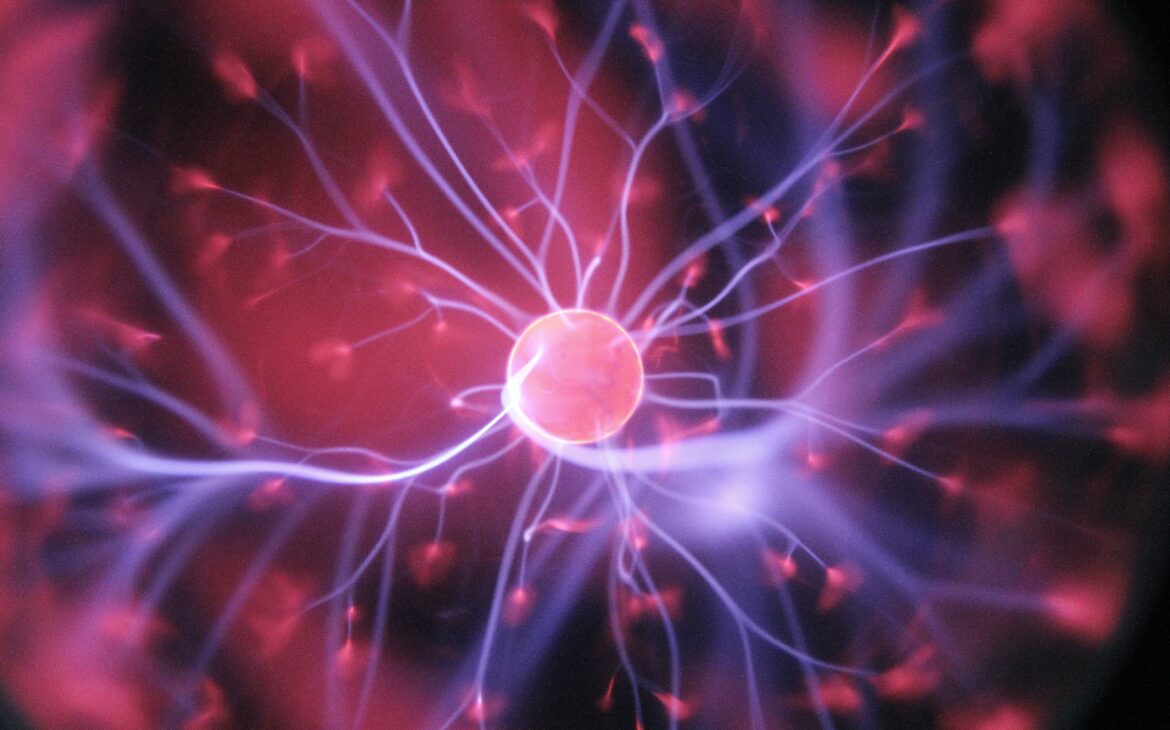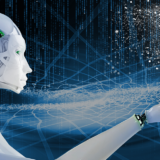Unleashing the Power of Human Mind: Understanding the Science behind Neural Link
Neural Link technology, a groundbreaking innovation in the field of brain-machine interfaces, has emerged as a captivating area of research and exploration. With the potential to revolutionize the way we interact with technology and understand the human mind, Neural Link opens up a world of possibilities. This article delves into the science behind Neural Link, aiming to unravel its intricacies and shed light on its transformative capabilities.
From understanding the basics of the human brain and neural connections to exploring the concept and working of Neural Link, we will examine its potential applications, challenges, and ethical considerations. Furthermore, we will delve into the prospects and implications of this remarkable technology, as well as address the critiques and concerns surrounding its implementation. Prepare to embark on a journey that unveils the power of the human mind and the science behind Neural Link.
Discover the fascinating world of Neural Link technology and delve into the intricate science behind it. Uncover how this groundbreaking innovation is revolutionizing the way we understand and interact with the human brain. Explore the potential applications and implications of Neural Link, and gain a deeper understanding of its impact on the future of neuroscience and human cognition.
1. Introduction to Neural Link technology
The rise of brain-machine interfaces
Imagine a world where you can control your computer, smartphone, or even your car, simply by thinking about it. It might sound like something straight out of a sci-fi movie, but thanks to the advancements in neural link technology, this concept is becoming a reality.
The idea behind neural link technology is to create a direct connection between the human brain and computer systems. It involves the use of brain-machine interfaces (BMIs), which allow the brain to communicate with external devices, bypassing the need for traditional input methods like keyboards or mice.
A brief history of Neural Link development
The development of neural link technology can be traced back several decades. Early experiments in the 1970s involved using simple brain implants to control basic movements in animals. Over the years, researchers made significant progress in understanding how the brain functions and developing more advanced neural interfaces.
One of the pioneers in this field is Elon Musk’s Neuralink, a company founded in 2016 to develop high-bandwidth brain-machine interfaces. Their work has gained significant attention and has pushed the boundaries of what was previously thought possible.
With ongoing research and development, neural link technology is rapidly advancing, bringing us closer to unlocking the true potential of the human mind.
2. The basics of the human brain and neural connections
Anatomy and structure of the human brain
The human brain is a marvel of nature, consisting of billions of interconnected cells called neurons. It is divided into different regions, each responsible for specific functions such as memory, movement, and sensory perception.
This division allows for specialized processing in different areas while facilitating communication and coordination between them.
Neurons and synaptic connections
Neurons are the building blocks of the brain and the primary means of communication within the nervous system. These specialized cells transmit electrical signals, known as action potentials, across synapses, or connections, allowing information to flow through the brain.
Synapses play a crucial role in neural communication. They are the tiny gaps where two neurons meet, and neurotransmitters are released to bridge the communication between them. This intricate network of neurons and synapses forms the basis of our cognitive abilities and the processing power of our brains.
Understanding neural networks
Neural networks are complex systems of interconnected neurons that work together to process and transmit information. These networks can be organized in various ways, depending on the task at hand.
Different neural networks are responsible for different functions, such as recognizing faces, understanding language, or controlling motor movements. These networks undergo continuous changes and adaptations, allowing us to learn new skills and adapt to our environment.
Understanding the structure and function of neural networks is crucial for the development and implementation of neural link technology, as it forms the basis for establishing effective communication between the brain and external devices.
3. The concept and working of Neural Link
Overview of Neural Link technology
Neural link technology aims to create a seamless connection between the human brain and external devices. It involves the implantation of a tiny device, often referred to as a neural link, directly into the brain.
This device consists of an ultra-thin electrode array that can record and stimulate neural activity. The neural link is connected to an external device, such as a computer or smartphone, which processes the signals received from the brain.
Neural Link implantation process
The implantation process of the neural link involves a surgical procedure, wherein the device is placed in a specific region of the brain. Advanced techniques and technologies are used to achieve precise positioning and minimize any potential risks.
The surgical procedure requires the utmost precision and expertise to ensure the safety and effectiveness of the implant. The goal is to establish a stable and long-lasting connection between the brain and the neural link device.
Electrode array and neural recording
The key component of the neural link is the electrode array, which consists of a series of electrodes that can detect and record neural activity. These electrodes are designed to be minimally invasive and cause minimal damage to the surrounding neural tissue.
Once implanted, the electrode array can pick up electrical signals generated by the neurons in the brain. These signals are then processed and decoded to extract meaningful information. This information can be used to control external devices, provide sensory feedback, or even stimulate specific regions of the brain.

4. Applications and potential benefits of Neural Link
Enhancement of brain-computer interfaces
One of the primary applications of neural link technology is the advancement of brain-computer interfaces (BCIs). BCIs have the potential to revolutionize the way we interact with technology by enabling direct communication between the brain and external devices.
With neural link technology, individuals with physical disabilities could regain their mobility and independence by controlling robotic prosthetics or wheelchairs using their thoughts. This technology could also enhance virtual reality experiences by providing a more immersive and intuitive interface.
Restoring lost sensory functions
Neural link technology holds promise in restoring lost sensory functions for individuals with sensory impairments. By bypassing damaged sensory organs, such as the eyes or ears, neural links could directly stimulate the relevant regions of the brain, allowing individuals to perceive visual or auditory information.
This could open up a world of possibilities for those with vision or hearing loss, enabling them to regain a sense of sight or sound and improve their overall quality of life.
Augmenting cognitive abilities
Another exciting potential of neural link technology is its ability to augment cognitive abilities. By directly interfacing with the brain, neural links could enhance memory, learning, and problem-solving capabilities.
Imagine being able to effortlessly recall information, learn new languages in record time, or solve complex mathematical equations with ease. Neural link technology could unlock these cognitive superpowers and take human intelligence to new heights.
As neural link technology continues to evolve and mature, the possibilities and potential benefits are truly mind-boggling. While there are still challenges to overcome and ethical considerations to address, one thing is for certain – the power of the human mind is on the verge of being unleashed like never before. So, get ready to witness the next frontier in human innovation, where science fiction becomes science fact.
5. Challenges and ethical considerations in Neural Link development
Ensuring privacy and data security
When it comes to connecting our brains to technology, privacy and data security become paramount concerns. The ability to access and manipulate our neural data raises questions about who has control over our most intimate thoughts and experiences. Ensuring robust encryption and strict privacy protocols will be essential in safeguarding our cognitive information.
Addressing potential health risks
While Neural Link technology holds immense potential, we must also be cautious about its potential health risks. As with any invasive procedure, there is a possibility of infection or adverse reactions. Additionally, long-term effects on brain health and development need to be thoroughly studied to ensure the technology’s safety and mitigate any potential risks.
Ethical implications of cognitive enhancements
Integrating technology into our minds raises ethical questions about the potential for cognitive enhancements. Should we allow individuals to augment their brains, potentially creating an uneven playing field? Will those who refuse to enhance be left behind? These ethical dilemmas must be carefully considered and balanced to avoid exacerbating societal inequalities.

6. prospects and implications of Neural Link technology
Advancements and potential breakthroughs
The future of Neural Link technology is brimming with exciting possibilities. Advancements in machine learning algorithms and neural interfaces hold the potential to revolutionize how we understand and interact with our minds. Imagine a world where we can effortlessly learn new skills or communicate with each other through thought alone.
Impact on various industries and sectors
Neural Link technology will undoubtedly have far-reaching implications across a multitude of industries and sectors. From healthcare and education to entertainment and communication, the ability to tap into our mind’s potential could reshape how we work, learn, and experience the world.
Societal implications and potential consequences
As with any transformative technology, Neural Link comes with societal implications and potential consequences. The integration of technology with our minds may blur the boundaries between humans and machines, raising questions about what it means to be human. It could also redefine notions of privacy, individuality, and personal autonomy. Society will need to grapple with these implications and navigate the challenges they present.
7. Critiques and concerns surrounding Neural Link implementation
Potential misuse and control of neural data
The potential misuse and control of neural data is a legitimate concern with Neural Link technology. Who can access our thoughts and memories? Could our neural data be used for nefarious purposes, such as manipulation or coercion? Safeguards and regulations must address these concerns and ensure that neural data remains securely protected.
Social inequality and access to Neural Link
The implementation of Neural Link technology may exacerbate social inequality if access remains limited to a privileged few. If only the wealthy or powerful can afford the enhancements, it could perpetuate existing disparities. It is crucial to consider ways to make the technology accessible and affordable to ensure its benefits are not reserved solely for an elite few.
Philosophical and existential concerns about human identity
With Neural Link blurring the lines between humans and technology, philosophical and existential concerns arise. How will our sense of identity shift when technology merges with our minds? Will our thoughts and experiences still be our own? These profound questions about human identity and the nature of consciousness must be pondered and explored as we forge ahead into this new era.
Conclusion
As Neural Link technology continues to advance, we stand at the precipice of a new era in human-machine integration. The potential benefits and applications are vast, but so too are the challenges and ethical considerations. While we navigate the complexities of this technology, it is crucial to approach its development with caution, ensuring privacy, safety, and equitable access for all. As we embrace the power of the human mind and unlock its mysteries through Neural Link, let us remember to tread carefully, guided by wisdom and a commitment to the betterment of humanity. The journey towards understanding and harnessing the full potential of the human mind has only just begun, and the future holds extraordinary promise.
FAQ
1. Is Neural Link technology safe?
Neural Link technology, like any emerging technology, comes with its own set of risks and considerations. While extensive research and development are underway to ensure safety, there are still challenges to address. Ensuring the long-term safety of implanted devices, preventing infections, and minimizing potential side effects are key areas of focus. However, it is important to note that Neural Link technology is still in its early stages, and further studies and trials are necessary before widespread adoption can occur.
2. Can Neural Link technology be used to enhance human intelligence?
One of the potential applications of Neural Link technology is the augmentation of cognitive abilities. While it holds promise for enhancing certain cognitive functions, such as memory or learning, the extent to which it can enhance overall human intelligence is still uncertain. The human brain is incredibly complex, and our understanding of its intricacies is still limited. Therefore, while Neural Link technology may offer improvements in specific cognitive domains, the idea of dramatically boosting human intelligence remains speculative.
3. What are the ethical concerns surrounding Neural Link technology?
As with any powerful technology, there are ethical considerations associated with Neural Link. Privacy and data security are paramount, as the technology involves accessing and recording neural activity. Additionally, questions arise regarding potential disparities in access to Neural Link, as it could exacerbate existing social inequalities. There are also philosophical and existential concerns about the impact of cognitive enhancements on our perception of human identity and the nature of consciousness. Addressing these ethical dilemmas is critical to ensuring the responsible and equitable development and implementation of Neural Link technology.
4. How might Neural Link technology impact various industries?
Neural Link has the potential to revolutionize several industries. In healthcare, it could enable groundbreaking advancements in areas such as neuroprosthetics, restoring lost sensory functions, and improving treatments for neurological disorders. In the field of human-computer interaction, it could lead to more seamless and intuitive interfaces, transforming the way we interact with technology. Additionally, Neural Link technology may have implications for education, gaming, and entertainment, offering new possibilities for learning, immersive experiences, and virtual reality applications. The full extent of its impact on various industries is yet to be fully realized, as research and development continue to unfold.
Thank you for reading 🙂
Get up to 70% Discount on Amazon (Buy Now)
If you want to build your website at an affordable price contact: www.nextr.in
Read this: Top 8 Apps Every Entrepreneur Needs


















